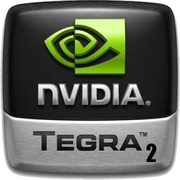Nvidia Sneaking Tegra into Server Market with Tesla
Despite Nvidia's ongoing claim that it is not such a great idea to compete with Intel in the blue team's core market, it appears that Nvidia is serious about testing the server market much more than it has so far.
Nvidia's presence in servers today is largely based on Tesla accelerator units, but the company may be leveraging its Tegra platform to push into the CPU market as well. According to an article published by PC World, it will be Project Denver that is designed to create a foundation in the server CPU market for the graphics chip maker. Steve Scott, CTO for Tesla, said that Denver will be part of future Tegra chips and there will be tweaks for chips targeted at servers.
Nvidia originally announced Project Denver back in January, but did not break out the server segment as target market. Back then, the company said that the chip will be coupled with Nvidia GPUs to create a heterogeneous computing platform. It appears that Denver is moving along as Nvidia is getting a bit more specific. The company will be competing against other ARM products such as Marvell processors, but the real target appears to be Intel's Atom server structure.
Nvidia did not say when the new core will be available.
Get Tom's Hardware's best news and in-depth reviews, straight to your inbox.

Douglas Perry was a freelance writer for Tom's Hardware covering semiconductors, storage technology, quantum computing, and processor power delivery. He has authored several books and is currently an editor for The Oregonian/OregonLive.
-
R0H1T Sneaking ?Reply
It sounds as if Nvidia is doing something illegal here unlike Intel which was actually fined by the EU(when AMD steamrolled the Pentium 4 fair & square) for doing such stuff ! -
mavroxur R0H1TSneaking ?It sounds as if Nvidia is doing something illegal here unlike Intel which was actually fined by the EU(when AMD steamrolled the Pentium 4 fair & square) for doing such stuff !Reply
What's illegal about making a complete nvidia platform? You have Intel based machines all over the place that use an Intel CPU/Chipset/IGP already.
-
Possibly just a reaction to this news. The timing seems too close to each other.Reply
http://semiaccurate.com/2011/10/26/hp-to-do-arm-based-servers/ -
R0H1T mavroxurI was talking about Intel not Nvidia, for better or worse the fact that AMD, Nvidia, Via have survived the strong arm bullying tactics of Intel & made headway one way or another is a testament to their tenacious attitude & innovation that the latter hasn't been able to emulate especially in the low power as well as GPGPU segment. ARM is also penetrating the traditional general computing space, with Windows 8 supporting both platforms, we might well see Intel again trying to stifle competition so watch this space for it will be the definitive wave of convergence that will rule in the end !Reply -
yumri in response to the ARM CPUs would Intel try to make more stuff integrated thus having to use the transfers to and from the CPU less or would it make a entirely new side of itself for a RISC type of CPU which can go faster then the CPUs which it is putting out now to compete with the ARM RISC CPUs on the same kinds of platforms without having the developers changing the way of codeing? With this which kind of CPU will nVidia produce a CISC with alot of stuff integrated into it or a RISC with the minimalist approach to it? If nVidia starts to produce entire platforms will they be subject to new laws? if they are will we be able to see the same kinds of advancements in the GPU arena from them still? what will really be neat if nVidia does it that is is if nVidia integrates both ininfiband and Ethernet into their platforms. as that would be a major cost savings for the TCO of a sever as long as the controller used will be able to do inifiband on the system board and the nVidia CPU able to do the processing needed for it to work. This would be a good idea for the lower end Severs which do not need the 2 - 10 processors in a single machine for extremely high threaded applications. unless the nVidia thing has as many cores as their GPUs do then that would be a very good CPU for the kinds of applications which severs do even at a speed of lets say 1.5GHz over hundreds of cores that would be very fast as long as the applications can take advantage of it that is otherwise it will be a waste of space. which could have been used for more speed in the IGP and/or more instructions for the nVidia CPU.Reply -
R0H1T ARM has enormous potential so let us hope that Intel doesn't screw it like Apple is doing for every other phone manufacturer & as a result all consumers in the world !Reply
http://news.softpedia.com/news/ARM-Chips-to-Power-Exascale-Supercomputer-Built-by-European-Consortium-230389.shtml -
eddieroolz Heck, if one can make a cross-hardware compiler that will compile regular code for x86 to run on a GPU, then NVidia is set for life.Reply
